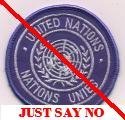Did FEMA Take Too Long?
For instance, it took five days for National Guard troops to arrive in strength on the scene in Homestead, Florida after Hurricane Andrew hit in 2002. But after Katrina, there was a significant National Guard presence in the afflicted region in three.
One officer stated that it took his unit 7 hours to go 70 miles because of all the debris and trees and powerlines down, etc. while trying to get to their New Orleans destination.
Jason van Steenwyk is a Florida Army National Guardsman who has been mobilized six times for hurricane relief. He notes that: “The federal government pretty much met its standard time lines, but the volume of support provided during the 72-96 hour was unprecedented. The federal response here was faster than Hugo, faster than Andrew, faster than Iniki, faster than Francine and Jeanne.”
So they libel as a “national disgrace” the most monumental and successful disaster relief operation in world history.
Eight days after the main levee protecting New Orleans breached the facts are:
* More than 32,000 people have been rescued, many plucked from rooftops byCoast Guard helicopters.
* The Army Corps of Engineers has all but repaired the breaches and begun pumping water out of New Orleans.
* Shelter, food, and medical care have been provided to more than 180,000 refugees.
Journalists complain that it took too long. Well, we don't have teleporters like in Star Trek. Sorry folks that is Hollywood - not reality.
Bringing supplies to an underwater city through an area the size of Great Britain which has no power, no working ports or airports, and a devastated and impassable road network takes time.
Moltenthought says, “You cannot speed recovery and relief efforts up by pre-positioning assets (in the affected areas) since the assets are endangered by the very storm which destroyed the region. No amount of yelling, crying, and mustering of moral indignation will change any of the facts above.”
Guardsmen need to receive mobilization orders; report to their armories; draw equipment; receive orders, and convoy to the disaster area. Guardsmen driving down from Pennsylvania or Navy ships sailing from Norfolk can't be on the scene immediately. “You cannot just snap your fingers and make the military appear somewhere,” van Steenwyk observed.
Relief efforts must be planned. Other than pre-positioning supplies near the area likely to be afflicted (which was done quite efficiently), this cannot be done until the hurricane has struck and a damage assessment can be made.
There must be a route reconnaissance to determine if roads are open, and bridges along the way can bear the weight of heavily laden trucks.
And federal troops and Guardsmen from other states cannot be sent to a disaster area until their presence has been requested by the governors of the afflicted states.
Exhibit A on the bill of indictment of federal sluggishness is that it took four days before most people were evacuated from the Louisiana superdome. The levee broke Tuesday morning. Buses had to be rounded up and driven from Houston to New Orleans across debris strewn roads. The first ones arrived Wednesday evening. That seems pretty fast to me.



































0 Comments:
Post a Comment
<< Home